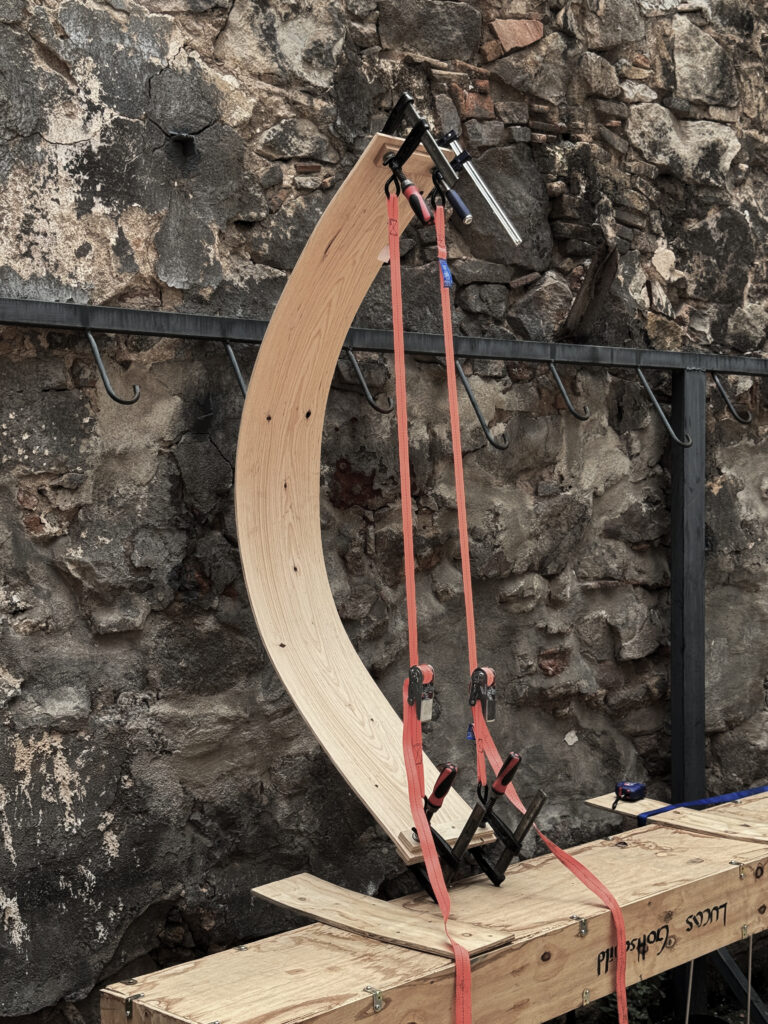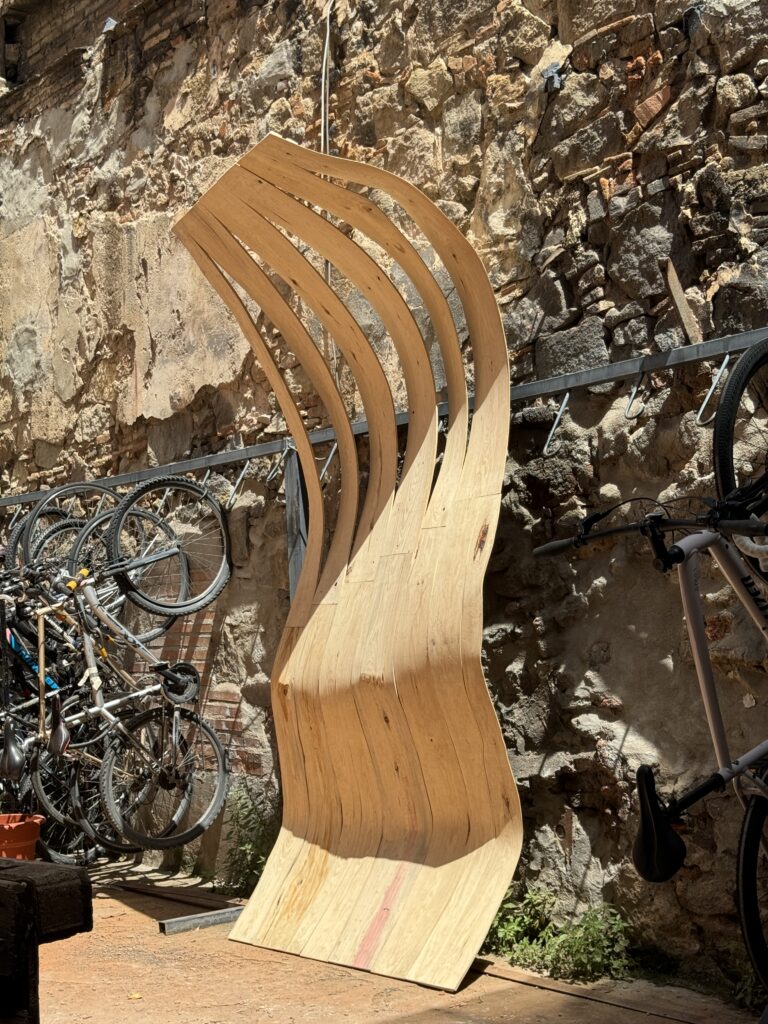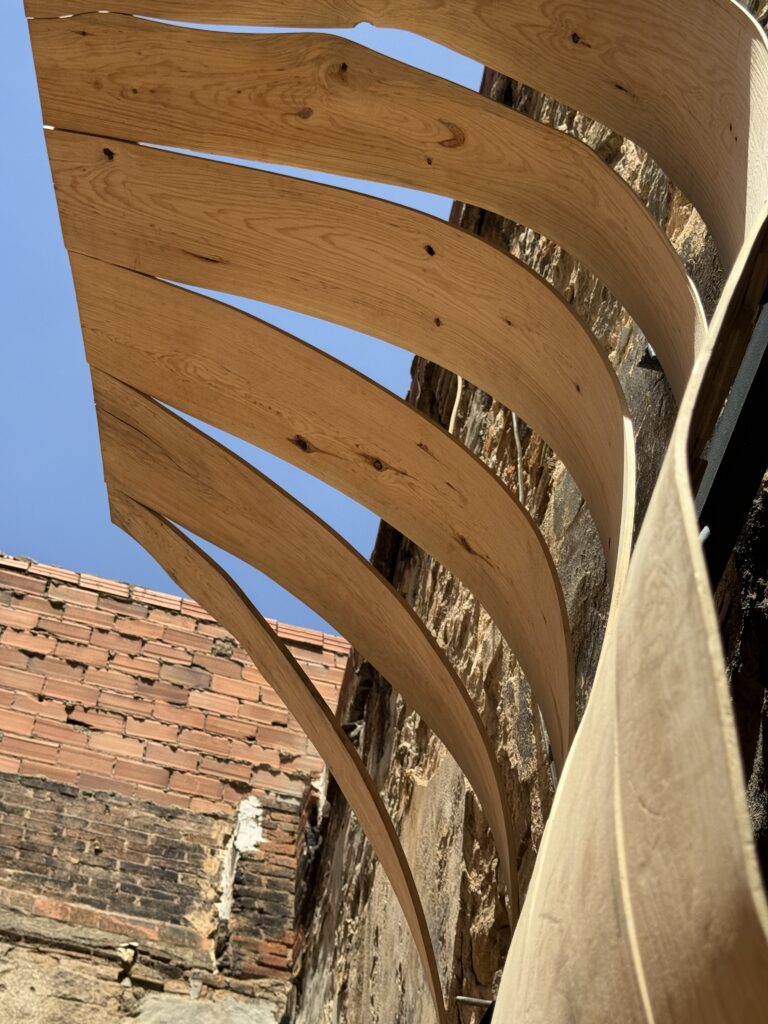MATERIAL DATA DRIVEN STRATEGIES
“BENDATA” explores how a material-informed strategy can control the bending of irregular leftover wood for bespoke architectural applications. Tackling wood leftovers, the research bypasses standardization by co-designing with nature, using post-tension bending, to achieve mass-customization. By listening to wood via a microphone during milling, material information is revealed to inform the bending process. The method involves controlling the thickness profile for homogeneous flexibility, counteracting force distribution, and achieving the designed curvature. The project culminates in a prototype that demonstrates this innovative approach, from scanning wood to creating a material library, leading to a physical-digital fabrication workflow.

How can a material-informed strategy control bending of irregular leftover wood for bespoke architecture ?
To understand the flexibility of wood according to its thickness following test has been done. This gained information of thickness variations is then used to inform the control and correction of wood properties.
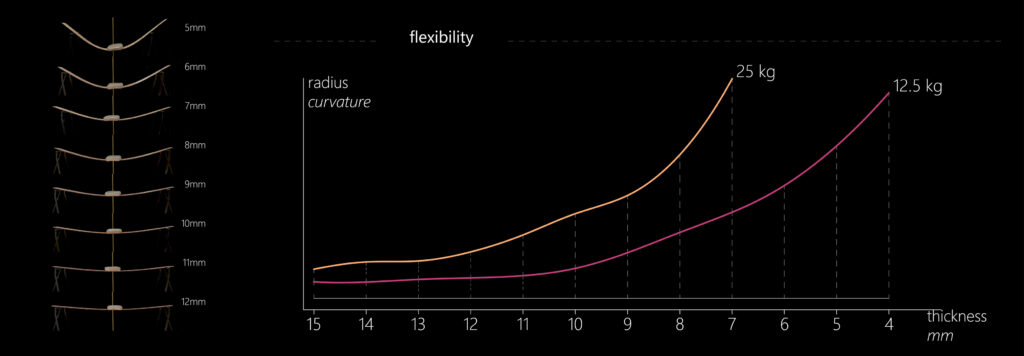
Above flexibility knowledge is then translated for the correction of three different categories. The first category is the density of the wood that is detected by a contact microphone and analyzed through different processing steps so that the thickness can be adapted to create a homogeneous flexibility of the plank.

The second category that needs to be corrected is the force distribution that is created through leverage of the post-tension cable strategy for bending.
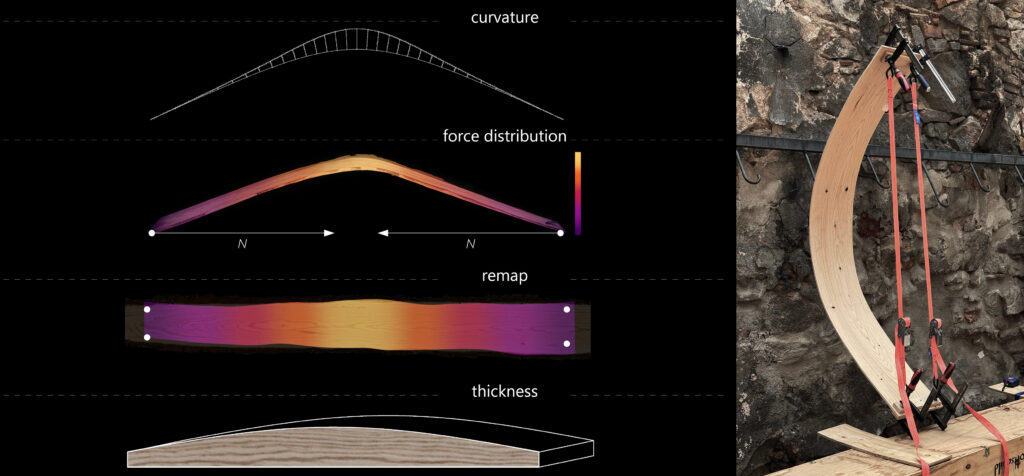
The third and last category that is having an influence on the plank thickness profile to achieve the final outcome is the individual designed curvature of each plank. Different geometrical calculation methods are used to understand the curvature over the plank to be then translated in thickness.
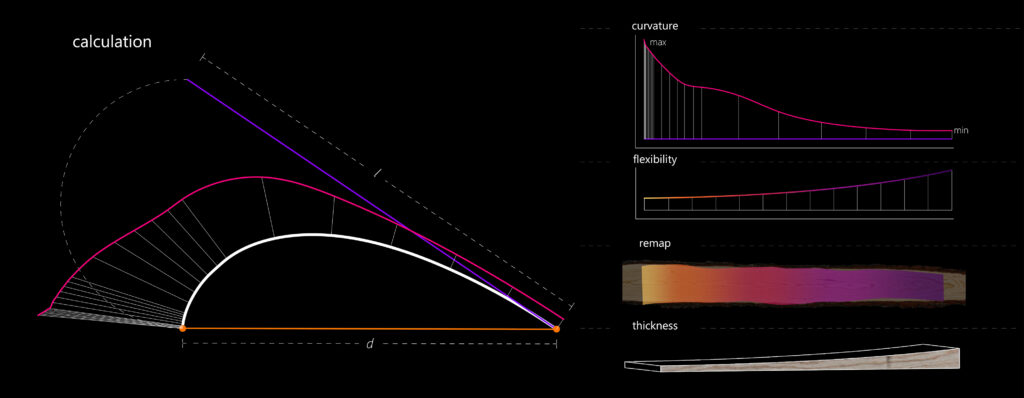
This developed knowledge is finally applied to a material informed workflow where the irregular material is scanned to extract information such as dimension, shape and grain pattern.
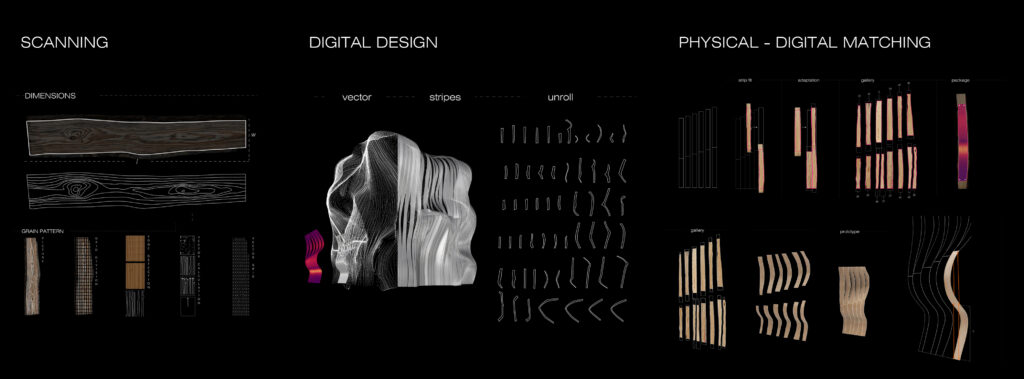
In the following are some fabrication and prototype images of the result.
